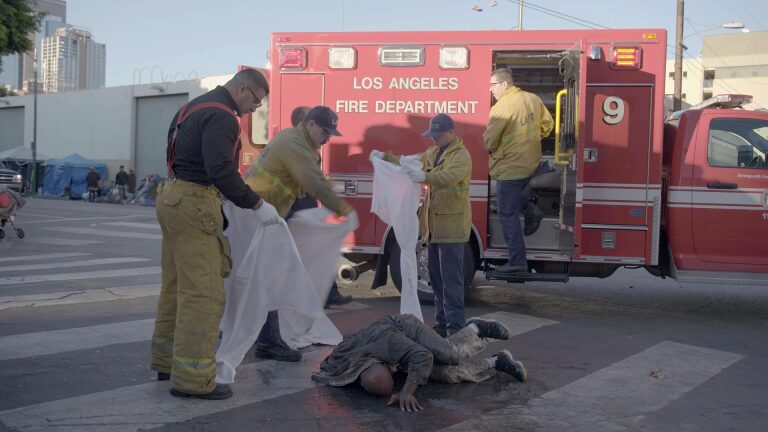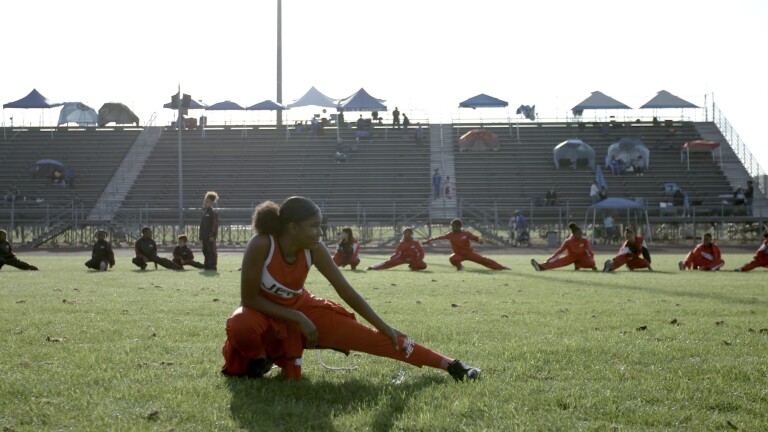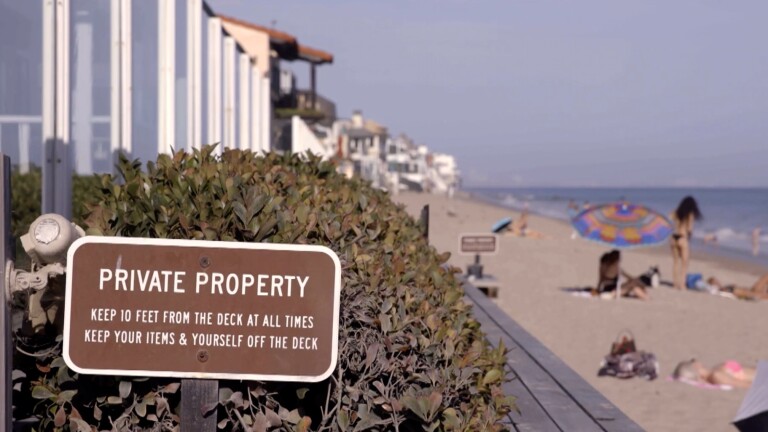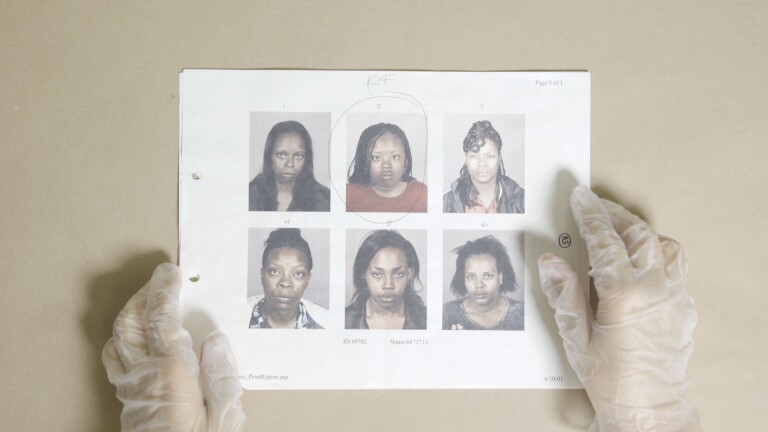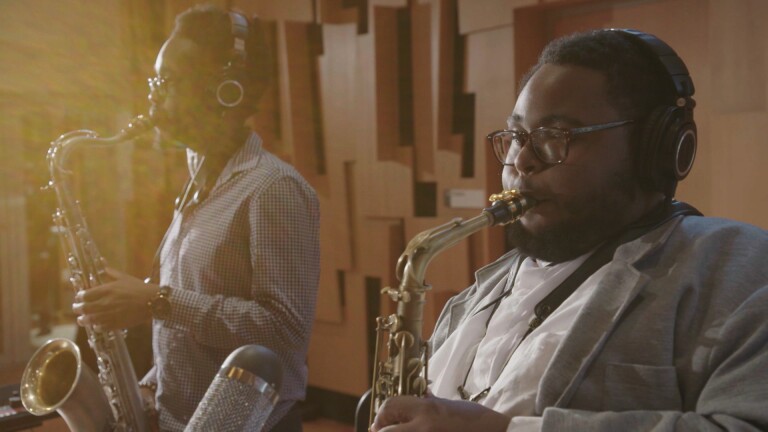
Food Fight: LAUSD's Healthier School Lunches Produce Critics
Just last week, first lady Michelle Obama announced new guidelines for more nutritious school lunches. But the Los Angeles school district has been ahead of the game. It started serving healthier meals last fall. So has it worked? Are students grabbing for apples instead of fries? Is it a food revolution, or a revolt? As Jennifer London found out, trying to please 700,000 kids is not easy.
TRANSCRIPT:
Jennifer London: It's lunchtime at Jaime Escalante Elementary School in South L.A. At first glance it looks like nothing much has changed over the years. Kids still line up to grab their trays. They still gather around the table to gossip and giggle while they eat. But take a closer look at what they're eating: chicken pozole, vegetable tamales, and quinoa salad. This lunch looks nothing like the old days, or even like last year's lunch.
Students: Junk food. Oily pizza and oily junk food.
London: This school year the district ditched the old menu of chicken nuggets, pizza, and grilled cheese in favor of a radically different, healthy menu. The new lunch program introduced in the fall promised to purge school cafeterias of unhealthy junk food. So on the menu today we have a cornbread muffin, we have peeled carrots, we have string cheese, and the main entree is - get this — tortellini with mushrooms, garlic, spinach, in a butternut squash sauce. And then to wash it all down, the kids have low-fat milk. Pretty fancy, and it certainly isn't your father's school lunch. And that's exactly the point, according to David Binkle, deputy director for L.A. Unified food services.
David Binkle: It's a drastic change that we made on purpose to really come up with items that are innovative, but also they are healthier options for our children - things like California sushi rolls, like vegetable tamales.
London: The new exotic food puts L.A. Unified a step ahead of even the newest round of federal guidelines, introduced in late January by first lady Michelle Obama.
Michelle Obama [stock footage]: When we send our kids to school, we have a right to expect that they won't be eating the kind of fatty, salty, sugary foods that we're trying to keep them from when they're at home.
London: In: more fruits, vegetables and whole grains. Out: whole milk, fried foods, and salty snacks. Before introducing its new menu, at the beginning of the school year, LA Unified was under attack for contributing to childhood obesity and became the focus of a reality show hosted by celebrity chef Jamie Oliver.
Jamie Oliver [TV clip]: Is this your school lunch? Do you know what the meat is? Does anyone know what that is? [holding up a piece of food] Why can't we put better food on the plate for those kids?
London: Now it's getting criticized for going too far in the other direction.
Binkle: And so now we have people saying that our menus are too healthy.
London: And newspaper articles claim the new menu is a "failure," with participation dropping more than 13 percent. The truth, according to Binkle, is somewhere in between.
London [to Binkle]: David, what has the response been to the new menu?
Binkle: Well, the response across the community has been, "Wow, this really is a change."
London: Wow in a good way, wow as in a "I'm not so sure" way?
Binkle: There has been "wow" in both ways. There are lots of kids and lots of parents and lots of staff that agree with what we're doing, to other children who are saying this is not so great. And so what we are looking at is, when they say that, the reasons why they are saying that.
London: And that's just what we found when we talked to kids at Jaime Escalante Elementary School.
London: So how do you guys like your lunch?
Male Students: I like it. I like it a lot.
London: You like it a lot. Do you like yours?
Male Students: Yeah.
London: Do you like that this lunch is healthier?
Male Students: Yeah.
London: You do?
Male Student: 'Cause they give us carrots, apples.
Male Student: They give us plums, apples...
London: You like that?
Male Student: yeah
London: But a little further down the lunch table, these girls give the new menu a failing grade.
Female Student: I don't like the flavor it has and it tastes bad. But it's better than last year's food.
London: And what about you, you didn't eat your lunch. Why don't you like it?
Female Student: Sometimes at lunch they have a certain smell and I don't like the scent and I lose my appetite when I smell it.
London: And this, the critics say, has led to enormous amounts of waste - everyday, uneaten lunches ending up here [students dumping food in trash can].
London [to Dennis Barrett]: Some have characterized it as a pretty big failure. Is that a fair characterization?
Dennis Barrett/Director, LAUSD Food Services: Absolutely not.
London: Dennis Barrett, who heads up the food services department, says reports that there's been a sharp decline in participation in the school lunch program are inaccurate, and in a district charged with feeding a school population the size of Baltimore, it's impossible to please everyone.
Barrett: Even though we did everything we could, we got 700,000 inputs from kids on the items that we had, there were still the rest of the students. We want to bring them in, they're looking for – where's the chicken nuggets, where's the pizza, where are the things we've traditionally had in the past that we can just pick and grab and go. And so it's a training process.
Binkle: We've had some backlash, but it's because we are making an aggressive approach with this program.
London: And it's a program funded largely by the federal government, which regulates not only the type of food to be served, but how much and the amount of food a student must take each day. The district depends on the federal program's money to feed the 81% of its nearly 700-thousand students who qualify for a free or subsidized lunch.
London: Are some of the federal requirements so strict that they are encouraging waste?
Binkle: When we get to the requirements of the program, it required that we had five components, a meat, a meat alternative, a fruit, a vegetable, a grain bread component and a dairy component. Of those five components, the children must take three of those five items. And so what it looks like is that the children don't like the food or there is a huge waste issue because kids don't want it all.
London: And then there's the issue of time. Some schools give students 30 minutes for lunch.
Binkle: The amount of time a child has to eat has a great deal to do with whether that child would try something or not. Our school district is trying to do the best they can with the resources we have with the budget issues that we have, but it is a real factor. To be able to put 3,000 kids out to eat lunch in 30 minutes is a real operational challenge.
London: Another operational challenge is preparing healthy, fresh food for more than 1,000 schools on a budget of less than $1 per day per student.
Grant Clinton/Newman Nutrition Center: We do, with summer programs, we probably do 50 to 52 million meals a year out here.
London: This is the nerve-center of L.A.'s school lunch program – the Newman Nutrition Center in Carson.
Clinton: The sweet potato fries, they're good and healthy fries, baked not fried, so it's a very healthy menu.
Binkle: How many portions are you serving?
Clinton: We're making 95,000 portions of these.
London: All of the food served at L.A. Unified schools is prepared and packaged here. Each school day, 30 semi trucks deliver the food to the cafeterias where it's heated and served, which, according to some of the students we spoke with, is part of the problem with the new food. It doesn't always travel so well from the trucks to the tray.
Female Student: The thing I don't like about the lunch is that sometimes the food is soggy and it's really, like sometimes, not cooked.
Female Student: Okay, let's be honest.
London: Yes, let's be honest.
Female Student: Our mom's food or the food we'd usually eat is not the same, because LAUSD food and your mom's food is a big difference. 'Cause she makes what you want and LAUSD gives you what they have, so...
Lucy Cortez/Mother: We still have some kids that are not very happy. There are still foods that, really, I wouldn't even eat them myself. So, you know, there is more of what the children want. What do they want.
London: The district concedes the new menu isn't an A-plus, yet, and it's constantly re-evaluating its food choices, but...
Barrett: We probably will not go back to serving pizzas and those things. It's a training process. We're in a school setting. We want to teach them and train them in good habits, recognizing good foods and a variety of foods as well.
London: Growing pains, and for some students, hunger pains, as L.A. Unified tackles the difficult task of getting kids to eat their fruits and veggies.
For SoCal Connected, I'm Jennifer London.

